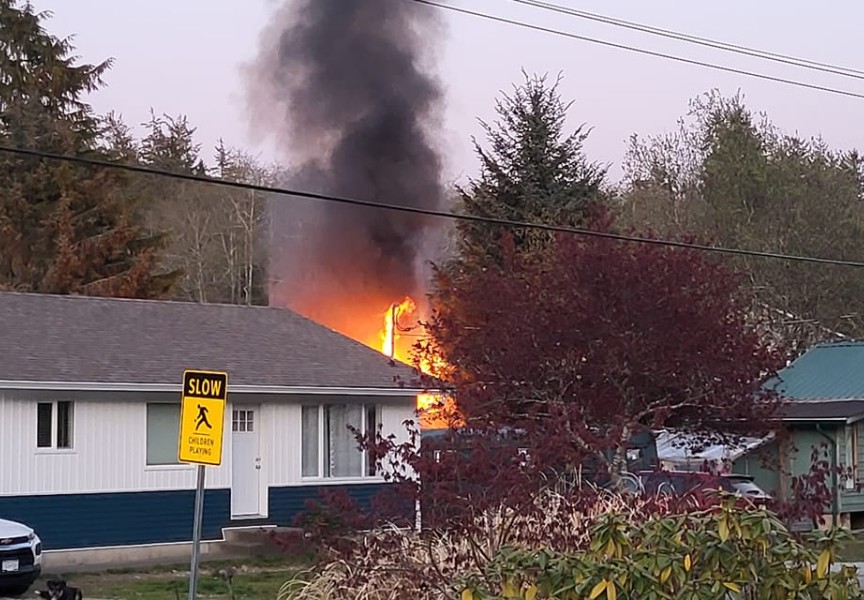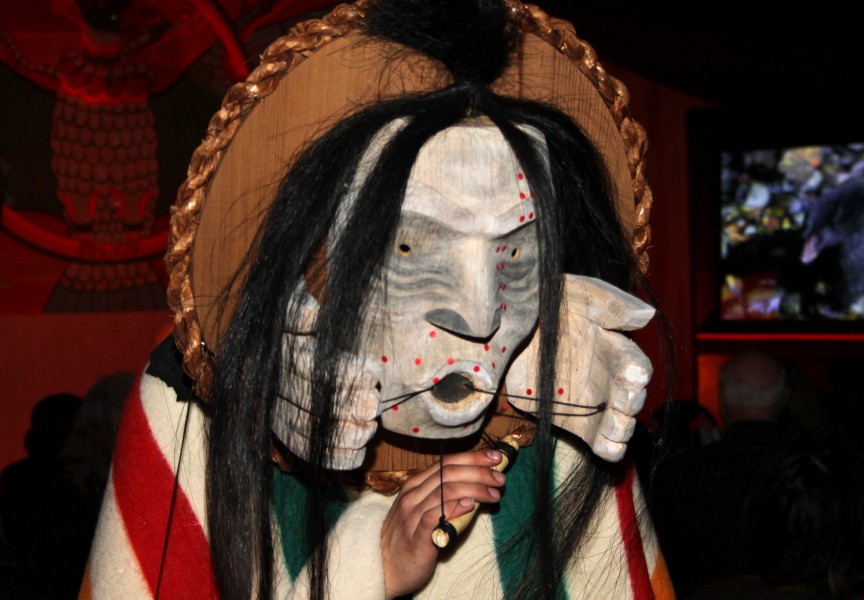When the Nuu-chah-nulth Tribal Council went looking for a tsunami debris coordinator, Lucas Osenenko jumped at the opportunity.
As an adventure guide living and working in Kyuquot-Checklesaht traditional territory, Osenenko was already tracking, recording and cleaning up the mass of flotsam and jetsam that has been accumulating on remote beaches since the devastating earthquake and tsunami that struck Japan on March 11, 2011.
“I found out about the [debris] coordinator position by seeing a one-page job posting at the band office,” he said. “Prior to that, I had already been studying a plan of attack to organize beach cleanups with the band council and with the school.”
Osenenko’s mandate is to bring together all of the parties within the Nuu-chah-nulth Nations who are currently monitoring and cleaning up beaches in their territories, and to create the necessary partnerships to transport volunteers and equipment to the remote areas. There is a certain amount of urgency to get initial cleanup and monitoring efforts underway soon, he noted.
All of that data, in turn, will be forwarded to U.S. National Oceanic and Atmospheric Administration, which created a debris-tracking website shortly after the tsunami.
The volunteer aspect is critical, Osenenko said, because there simply isn’t the funding to pay specialists to clean up beaches. The effort will require time and effort from stakeholder groups working in the territories, but he also hopes to enlist students of all stripes as part of an education program.
“I think it is important that we educate people about the effects of plastics in the environment. Here we have the most amazing, pristine beaches where the only unsightly thing you encounter is a mass of plastics and Styrofoam.”
When you are working with volunteer organizations in remote areas, however, you are required to provide industry-standard communications, safety equipment and first aid certification. Osenenko said with limited funding available for cleanup operations, that is where the main funding should go.
“There is an expectation that, whatever we do with this project, there will be a long-term benefit to the community, to use the processes and the capacities that we set up through the tsunami debris program, to train up and organize at the community level for any emergency that might present itself.”
The critical element is coordination, and that, Osenenko knows, is his role in the picture, and he has spent much of his time expanding his existing network within the marine community.
“This position is in response to the garbage, but there is the expectation that this will enhance our emergency response [capacity].”
While he does not have an aboriginal heritage himself, Osenenko’s background is inextricably linked with the Nuu-chah-nulth community, although that happened in a roundabout way, he explained.
“My parents were from southern Ontario, and they got tired of the Big City, so they travelled and lived on the East Coast for a while,” Osenenko said. “My dad’s sister married a man who was working for the navy in Esquimalt. He got a job on Spring Island when it was a loran [navigation aid] site.”
Osenenko’s parents subsequently obtained employment at the station, and the two couples lived and worked on Spring Island, a short boat ride from the main Kyuquot community.
“The loran station closed down in 1980, and they moved to Walters Cove, which was a major commercial fishing hub at the time. It’s across the bay from Houpsitas, the new village.”
While Osenenko’s uncle subsequently left the community, his parents and aunt purchased a private two-and-a-half acre island within shouting distance of Houpsitas, and continue to live there.
“The entire community is tight-knit. We call ourselves ‘one big happy dysfunctional family.’ When anyone is in need, the community rallies around them.”
Osenenko was a member of the first class at the new community school, which began as a K-10, then added Grade 11 just in time.
“I had to move out for Grade 12. A lot of my friends stayed and worked on their Grade 12, which they added the next year. I moved to Surrey and stayed.”
Osenenko enrolled at Kwantlen University College in sciences, then subsequently trained as a drywaller and worked in the construction industry on the Lower Mainland, spending his summers back home.
In 2012, he moved back for good.
“The first year, I worked as a teacher’s assistant at my old school. A lot of the students were the children of people I had grown up with.”
Later, he worked for the band council, renovating on-reserve housing. But he was never far from nature.
“When I was 20, I started fish guiding in Kyuquot, along with a lot of my peer group. The commercial fishing shut down in 1994 as the result of El Nino. The government started the license buy-back program and that whole lifestyle of small commercial fishing died out very quickly. Nobody really knew what was happening at the time, or whether the salmon runs would survive.”
But the tradition and knowledge base of the “Mosquito Fleet” remained, and people who knew how to catch fish in local waters from small boats found new ways to make a living.
“Now, sport fishing has developed to where it is the new face of commercial fishing, and it’s grown to include eco-tourism.”
Along with charter fishing, Osenenko has also guided tourists into many of the remote regions of the territory, including Brooks Peninsula Provincial Park.
Beachcombing has always been an important pursuit for people on the B.C. coast, he said, but since the first tsunami remnants began washing ashore in 2012, it has now become a matter of emergency response.
Large floating objects can be a hazard to navigation, and they can also harbour invasive species, as well as leaking fuels, lubricants and hazardous chemicals into the environment.
“The windborne objects, like large floats, as well as the boats, began to show up the next year, in 2012. That summer, I recovered a ‘tsunami’ boat on Spring Island, where I grew up.”
Osenenko said while the debris has dispersed more widely than originally projected on the NOAA website, and the buildup hasn’t developed as quickly as expected, there is still a lot of junk landing on the beaches, and it presents a danger both to the environment and to the tourism industry.
Osenenko noted that the cleanup campaign could provide opportunities for a whole range of people to come in and experience remote wilderness areas and First Nations culture. That could include organized school/university expeditions for academic credit, clubs and service groups, even paying eco-tourists with a desire to protect the environment.
There is also a major recycling component, Osenenko said. While the much-coveted glass floats traditionally used by Japanese fishermen have become increasingly rare over the years, there is a huge amount of salvageable flotation material, usable equipment and small collectibles within the floating mass of tsunami debris.






